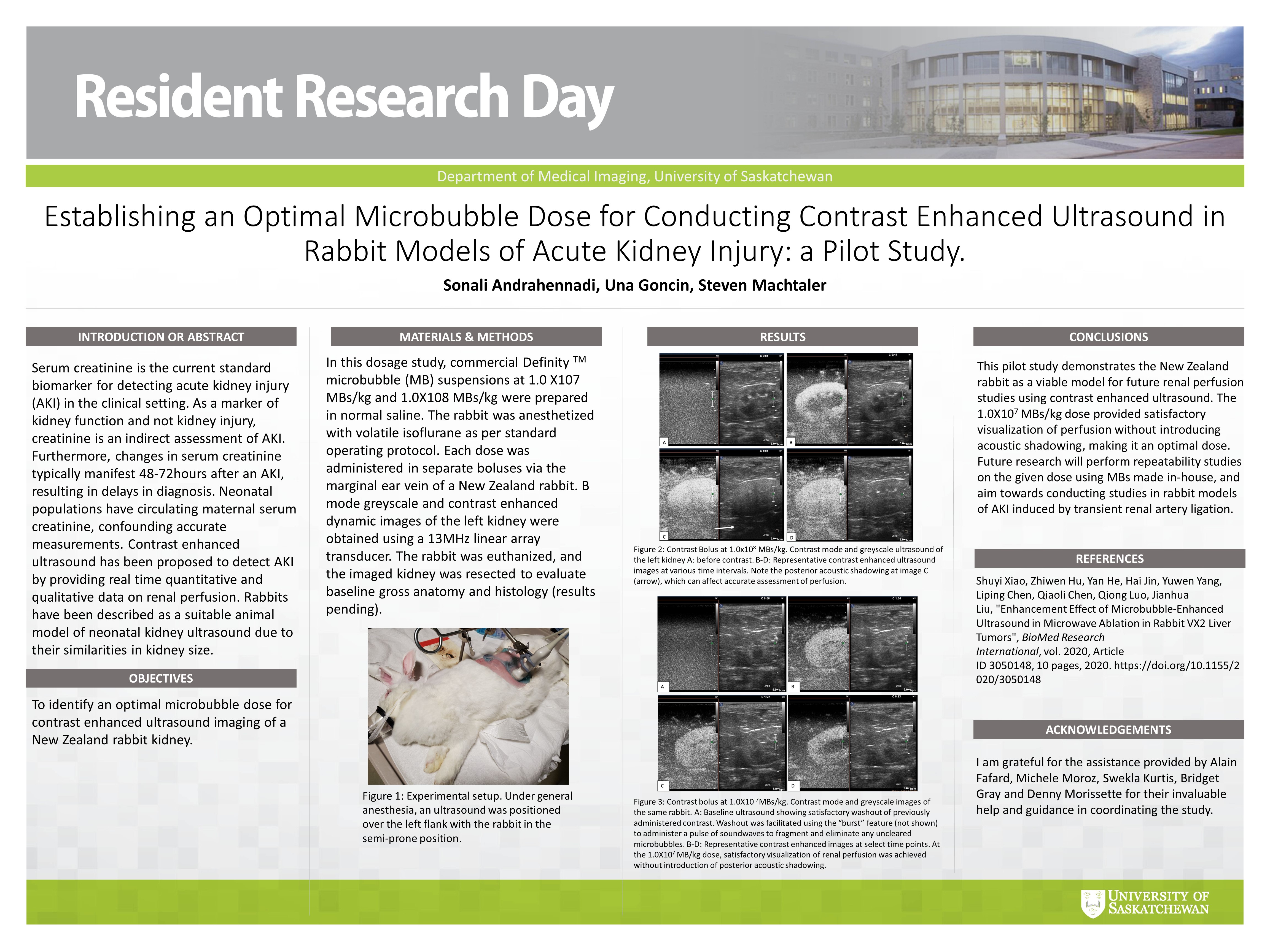
A1.9: Establishing an Optimal Microbubble Dose for Conducting Contrast Enhanced Ultrasound in Rabbit Models of Acute Kidney Injury: a Pilot Study
Sonali Andrahennadi, Una Goncin, Steve Machtaler
BACKGROUND: Serum creatinine is the current standard biomarker for detecting acute kidney injury (AKI) in the clinical setting. As a marker of kidney function and not kidney injury, creatinine is an indirect assessment of AKI. Furthermore, changes in serum creatinine typically manifest 48-72hours after an AKI, resulting in delays in diagnosis. Neonatal populations have circulating maternal serum creatinine, confounding accurate measurements. Contrast enhanced ultrasound has been proposed to detect AKI by providing real time quantitative and qualitative data on renal perfusion. Rabbits have been described as a suitable animal model of neonatal kidney ultrasound due to their similarities in kidney size.
OBJECTIVE: To identify an optimal microbubble dose for contrast enhanced ultrasound imaging of a New Zealand rabbit kidney.
METHODS: In this dosage study, commercial Definity TM microbubble (MB) suspensions at 1.0 X107 MBs/kg and 1.0X108 MBs/kg were prepared in normal saline. Under general anesthesia, each dose was administered in separate boluses via the marginal ear vein of a New Zealand rabbit. B mode greyscale and contrast enhanced dynamic images of the left kidney were obtained using a 13MHz linear array transducer.
CONCLUSION: The 1.0X107 MBs/kg dose provided satisfactory visualization of perfusion without introducing acoustic shadowing, making it an ideal dose for future perfusion studies (Figure 2). Future research will perform repeatability studies on the given dose using MBs made in-house. Following this, renal perfusion studies will be conducted in rabbit models of AKI induced by transient renal artery ligation.
